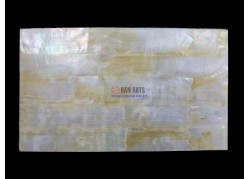No government support, no disciples …
In 1964, a cultural committee was established to advise on the preservation, management and utilization of cultural properties. The foundation of the foundation was established in 1962 and it was promulgated and promulgated for the first time to designate and protect intangible cultural property according to this law. As a result, important intangible cultural properties have been designated since 1964, and the holder of the cultural property has received the protection of the state from the cost of living and the training of cultural assets.
All intangible cultural properties are inherited by people, and it is necessary to educate them to cultivate successors. However, there has been a field where the designation of important intangible cultural properties has been withdrawn and the application for support has been discontinued. It is a field of painting lacquer.

Although it is not an important intangible cultural asset, there is a craftsman who has been deeply rooted in this field and has reached the level of ” She is a hereditary craftsman. He collected not only historical techniques but also historical data. After working in the hometown of Tongyoung in Gyeongsangnam province in 1964, he moved to his home in 1974, following a teacher who settled in Wonju, Gangwon province. It has been 50 years since the beginning of lacquerware, and it has been 45 years since the lacquerware has been hanged.
Lacquer lacquer is a technique to decorate a variety of patterns by mixing pigments that can show various colors in addition to lacquer. Historical well-known artifacts are Lacquered lacquer ware, which is a typical lacquer ware excavated from Dae-dong county in the Pyongan province.
The inside of this is red, and the middle of the upper part is composed of three colors of red, blue and green.
Traditional paintings are painting with lacquer, but the biggest attraction is the line. It is based on the line drawing which expresses the line. It is not so simple to draw a picture with a chill. The works of both craftsmen, which are completed through long research and training, give a sense of old-fashioned depths of traditional chil- dren, and at the same time delicacy is overwhelming. The works that remain for a long time tell that he has reached a transcendental level by standing up from a lot of distress and suffering.
“I came up with the idea of making a national treasure. Unfortunately, I did not accept me as a cultural asset. Important intangible cultural properties should be a loan to the field. Even though it is not an important intangible cultural asset, I am making treasures with my heart. “

If he was to become a cultural property in Gyeongsangnam-do or Gangwon-do, he would have already applied 30 years ago. Because he did not receive important cultural assets and fire fires twice, he insisted only on important intangible cultural properties.
However, this cultural property designation system has changed at any moment. I do not think that the maturity of the system should be followed at the time of going to advanced countries of culture. Chaehwa lacquer is one of the representative lacquer crafts in Korea and East Asia. However, the veins are blurred and they are shaken by the lacquerware of the past to shake the historical roots.
Lacquer is an area that can be made only by hand. “What I would like to say to young craftsmen and cultural relicers is that the future will be brighter when you stick to it for the next 20 years and after 30 years. We have to train our minds. Then my business is rewarded, and I can make treasures. ”
The craftsman never forgets what he felt by hand. right. And I never forget what I learned in my body and mind. Anything can not follow the senses and experiences of the hands. I never forget to keep it in mind. I just forget to put it on my head. You should not just have religion, you should always do it and train your mind.
“I hope that my works become treasures after I die. So I can not make it neglected. It is my call to live a long life. “








